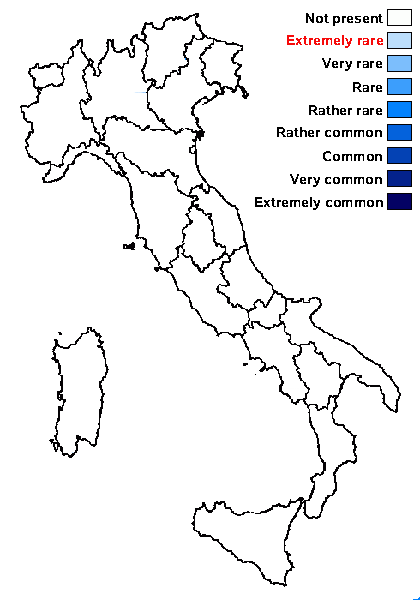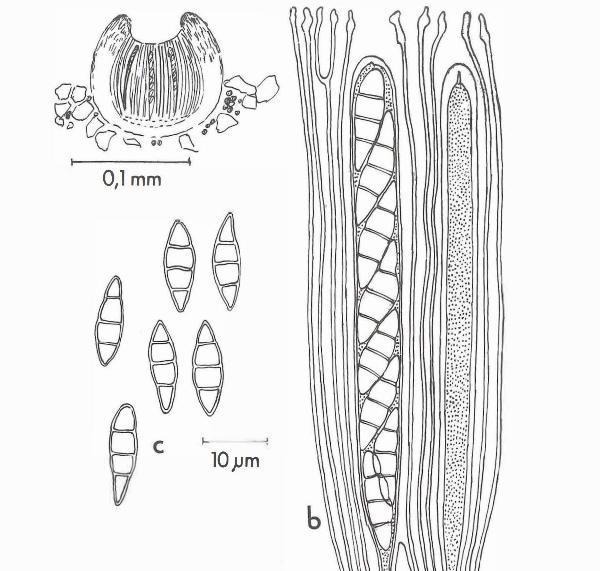Absconditella fossarum Vězda & Pišút
Nova Hedwigia, 40, 1-4: 342, 1985
Synonyms:
Distribution:
Description: Thallus crustose, inconspicuous or very thin and greenish grey, usually intermixed with algal films. Apothecia short-lived, semi-immersed to broadly sessile, pale orange-red to red-brown when dry, translucent when moist, round, 0.1-0.15 mm across, with a strongly concave disc and a scarcely raised, moderately thick, entire proper margin. Proper exciple red-brown, c. 20-25 µm wide laterally, of conglutinated, parallel hyphae; epithecium indistinct, colourless; hymenium colourless, 70-90 µm high, I+ yellowish, K/I-; paraphyses dense, slender, indistinctly septate, simple or forked, 0.5-0.8 µm thick, irregularly broadened at tips; hypothecium very thin, c. 10 µm high, colourless. Asci 8-spored, long-cylindrical, thin-walled, the upper part with a distinct, K/I- apical dome penetrated by a long, narrow tube extending from the endoascus. Ascospores 3-septate, hyaline, fusiform, 12-14 x 4-4.5 µm, with very thin walls and septa. Photobiont chlorococcoid. Spot tests: thallus K-, C-, KC-, P-. Chemistry: without lichen substances.Note: on soil in rock fissures, more rarely on weathered rocks, over acid siliceous substrata. Known from Central Europe, from Slovakia and Poland to the Netherlands, this easily overlooked species should be looked for also in Italy.
Growth form: Crustose
Substrata: rocks, soil, terricolous mosses, and plant debris
Photobiont: green algae other than Trentepohlia
Reproductive strategy: mainly sexual

Predictive model
Growth form: Crustose
Substrata: rocks, soil, terricolous mosses, and plant debris
Photobiont: green algae other than Trentepohlia
Reproductive strategy: mainly sexual

Predictive model


